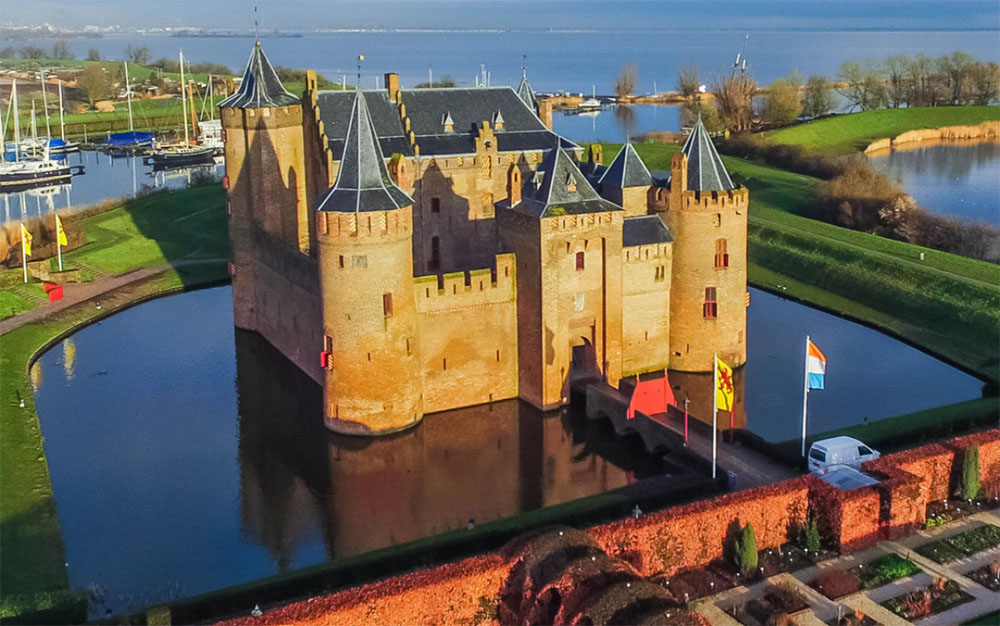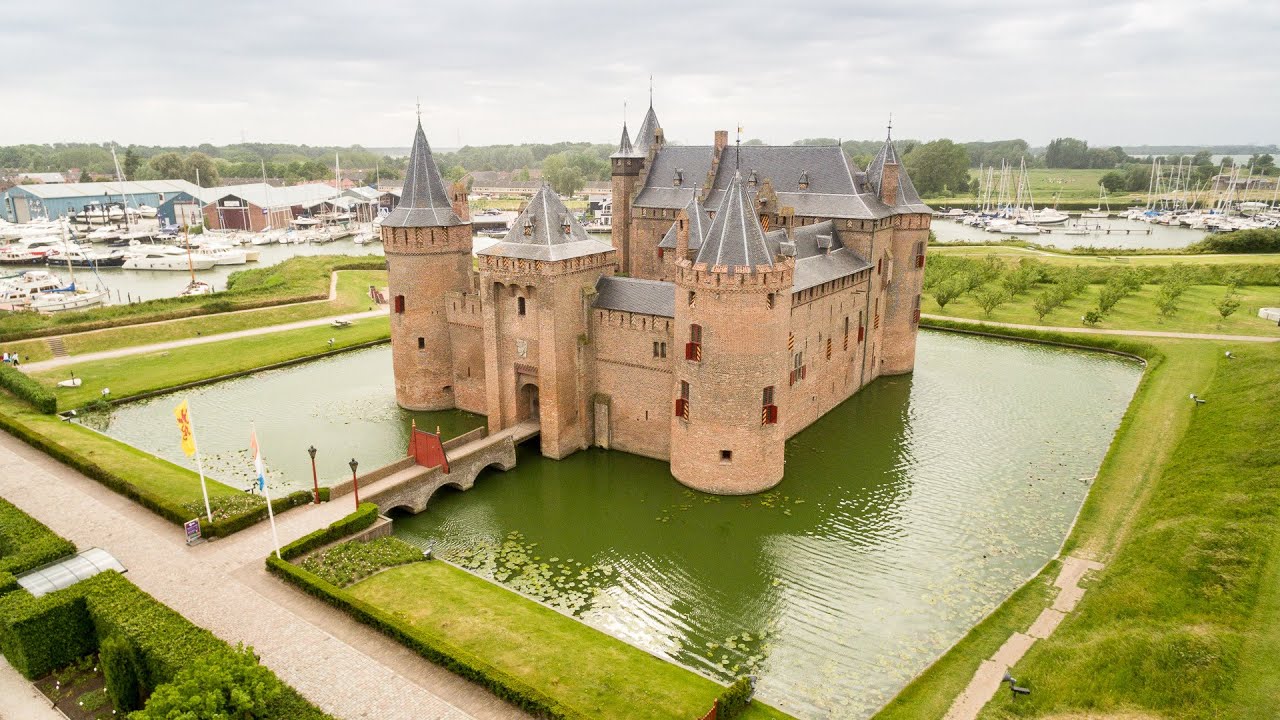Muiderslot Castle
Muiderslot Castle, also known as Muiden Castle, stands as one of the most well-preserved and historically significant castles in the Netherlands. Its imposing structure and rich history make it a popular destination for tourists and history enthusiasts alike. The castle offers a unique glimpse into medieval life and Dutch heritage, providing a captivating experience for all who visit.
Can’t wait to visit the castle? Book your Muiderslot Castle tour online.
Location of Muiderslot Castle
Situated at the mouth of the Vecht River in the small town of Muiden, Muiderslot Castle is conveniently located near Amsterdam, approximately 15 kilometers to the southeast. The original choice of the castle’s strategic position was due to its proximity to important waterways and trade routes, playing a crucial role in the defense and economic control of the region. The picturesque surroundings and the serene river views enhance the castle’s charm, attracting numerous visitors throughout the year.

History of Muiderslot Castle
Count Floris V of Holland first constructed Muiderslot Castle in the late 13th century, around 1280, to control the surrounding waterways and fortify against invaders. However, after his enemies captured and murdered Count Floris V in 1296, they destroyed the castle.
In the early 14th century, Muiderslot Castle was rebuilt on the same site by Albert I, Duke of Bavaria, who recognized the strategic importance of the location. The new construction included enhanced defensive features such as thick walls, a moat, and a drawbridge. These features reflected the advancements in military architecture of the time.
Throughout the centuries, Muiderslot Castle played various roles in Dutch history. During the Eighty Years’ War (1568–1648), the castle served as a military outpost. In the 17th century, the castle gained prominence. It became the residence of Pieter Corneliszoon Hooft, a renowned Dutch historian, poet, and playwright.Hooft transformed the castle into a cultural hub, hosting the Muiderkring, a circle of writers, poets, and artists who contributed significantly to the Dutch Golden Age of literature and arts.
The castle’s fortunes declined in the 18th and 19th centuries, leading to a state of disrepair. However, in the late 19th century, Dutch architect Pierre Cuypers, known for his work on the Rijksmuseum in Amsterdam, led efforts to restore Muiderslot to its former glory. The restoration project meticulously preserved the historical elements of the castle while making necessary renovations to ensure its structural integrity.

Current status
Today, Muiderslot Castle stands as a national museum and a testament to the rich history of the Netherlands. The Dutch government manages and meticulously maintains and restores the castle, offering visitors a well-preserved glimpse into its storied past. The interior of the castle features period furnishings, weaponry, and artworks, providing an authentic experience of medieval and Renaissance life.
The castle grounds include beautifully maintained gardens, which have been recreated based on historical designs. These gardens, featuring herbs, flowers, and ornamental plants, add to the overall aesthetic appeal and historical accuracy of the site.
Muiderslot Castle serves as a cultural and educational venue, hosting a variety of exhibitions, events, and activities throughout the year. Guided tours are available, offering detailed insights into the castle’s history, architecture, and the lives of its former inhabitants. Special events, such as medieval festivals and historical reenactments, also take place at the castle. These events bring the castle’s vibrant history to life for visitors of all ages.
Muiderslot Castle remains a significant cultural and historical landmark in the Netherlands. Its strategic location, rich history, and well-preserved state make it an essential destination for those interested in exploring the heritage of the region. By visiting Muiderslot, you can step back in time. Experience the grandeur and complexity of medieval and Renaissance life in the Netherlands.
Admission
Community features
Castle features
Video
Location
Official website
Featured listings














